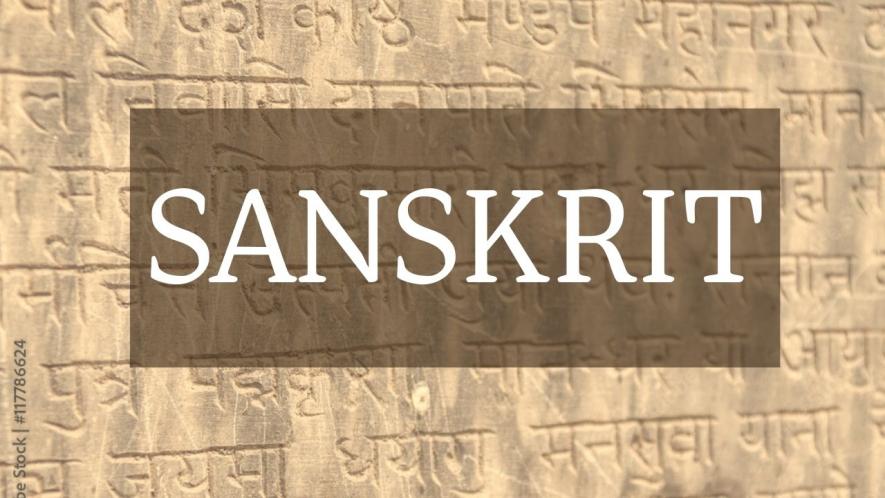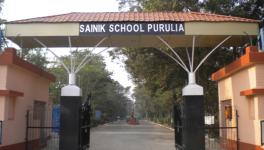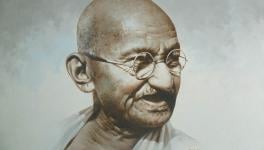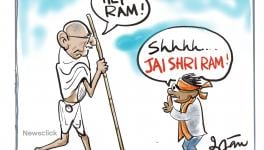History Myth Busting Series II: Sanskrit – A Mother or Sister Language?

Claims of Sanskrit being the mother of all languages force it to live in a very tightened and narrow understanding.
In the past few years, many debates and contentions about history have moved from the academic sphere and entered a wider public forum. A battleground has emerged where particular cultures, narratives and ideologies are pitted against others in order to prove one as dominant and superior to others. The Hindu Right is a major proponent of many such false narratives which aim to establish a particular version of Hindu culture and ideology as the sole and rightful heir to India’s varied history and culture. Such false narratives abandon what the academic world has established through evidence, and they rely on getting traction through popular media, including social media. Newsclick is publishing a series of brief explainers based on evidence-based scholarly research that counters some of these prominent myths propagated by Hindutva forces. Part 1 of this series can be read here.
The claim made by various figures and organisations of the Hindu Right is that Sanskrit is the 'mother of all languages', from which lesser forms such as Latin, Greek and English descended. A milder version of this narrative exists, which claims only that Sanskrit is the mother of all Indian languages instead. Such claims serve a singular purpose which is to establish the dominance of Hindutva and its brand of Hinduism within the national and international spheres. It also seeks to instil a strong sense of false pride within its followers for being inheritors of a supposedly great and ancient culture.
A favourite tactic in pushing this narrative is to selectively quote from Sir William Jones’ Third Anniversary Discourse, which he delivered on February 2, 1786, to the Asiatic Society.
“The Sanskrit language, whatever be its antiquity, is of a wonderful structure; more perfect than the Greek, more copious than the Latin, and more exquisitely refined than either…".
This statement is used to claim Sanskrit’s superiority over the other languages, with Greek and Latin becoming diluted versions of Sanskrit. However, this quote is incomplete. Jones went on to say, “… yet bearing to both of them a stronger affinity, both in the roots of verbs and in the forms of grammar, than could possibly have been produced by accident; so strong indeed, that no philologer could examine them all three, without believing them to have sprung from some common source, which, perhaps, no longer exists”.
This leads us to a different assessment of the nature of Sanskrit. Its similarities with Latin or Greek do not mean that they originated from it but only that all three share a common origin, a proto-language. This challenges the narrative of Sanskrit being the mother language of all languages; instead, we can now show that it is primarily a sister language.
Sanskrit belongs most immediately to the Indo-Aryan family, which is a part of the Indo-Iranian family, which in turn belongs to the Indo-European language family. A language family can be understood as a group of related languages that share a common ancestral language or proto-language. There are differing theories regarding the origins of the Proto-Indo-European language. Some, such as V. Gordon Childe, have argued that it originated from the Caspian steppe areas north of the Black Sea, while more recently, it has been argued by Colin Renfrew that it originated from Anatolia and the Near East.
The main point to note here is that the descendants of this language migrated from around the Black Sea and found their way into most of Europe, the Iranian plateau and the northern Indian subcontinent. Sanskrit did not completely originate in India; instead, a proto-version of it arrived along with the Aryans sometime between 2000 – 1500 BCE within the subcontinent and evolved up to a certain point. We get a glimpse of this migration by looking at the Mitanni Kingdom (c. 1550 – 1260 BCE) in modern-day Turkey, where Indo-Aryan origin words can be found in the local Hurrian language. In the Mitanni treaties, Vedic deities such as Mitra, Varuna, Indra and Nasatya are invoked. The Kikkuli texts from this kingdom contain terms such as aika, tera, panza and satta (one, three, five and seven).
Within India, multiple language families exist, such as Indo-Aryan, Dravidian, Austro-Asiatic and Tibeto-Burmese. Indo-Aryan can be traced to the Indo-European language family. The earliest decipherable language group that can be traced within the northern Indian subcontinent is the Old Indo-Aryan, in which Vedic Sanskrit is the oldest language. The next phase is called Middle Indo-Aryan, within which we find languages such as the Prakrits and Pali. These two languages were the vernacular languages of the time, patronised by kings and Buddhists, respectively. They are considered separate from Sanskrit, evolving independently.
The most recent phase of this group is called Modern or New Indo-Aryan, which contains languages such as Hindi, Urdu, Gujarati, Kashmiri, etc. The origins of the Dravidian language family are uncertain. Members of this group include Kannada, Telugu, Tamil and Malayalam. The presence of some similarities in terms of vocabulary is pointed out as reason for Sanskrit being a mother language to Dravidian languages. Looking at Franklin C. Southworth’s work, we can identify Dravidian origin words such as ulakkai (pestle) in Sanskrit as ulukhala (mortar), kuttu (strike) as kuta (mallet, hammer) and nallu (reed) as nada/nala (reed). We also find Sanskrit origin words such as paksa (wing, side) in Dravidian as pakkam (wing, side), grdhra (greedy, vulture) as gadda (kite) and aksa (axle) as accu (axle). These commonalities are loanwords, which have been partly borrowed from one language into another, often with little or no change.
Peggy Mohan, in her book Wanderers, Kings and Merchants, argues that “loanwords should only be considered an outer clothing, to be added or dropped without any effect on the genome of the language”. Thus, it is important to understand here that the existence of certain loan words from Sanskrit within some Dravidian languages does not imply that they are an offspring of Sanskrit. Indeed, the reverse is also true, as Dravidian loan words can be found within Sanskrit. One would not claim that English is a direct offspring of Sanskrit because certain words were borrowed by the British. What this suggests instead is an interaction and dialogue between the two groups through which this exchange has occurred. This highlights how languages are a continuous process, they evolve over time. A living language does not remain stagnant, there is no final form; instead, it evolves and spreads through the interactions of different groups.
Sanskrit is doubtless a language with a unique history and place within Indian society. As is with any language, it has its own beauty and appeal as well. However, we must remain grounded in how we approach and interpret it. Within its modern context, Sanskrit is exposed to either appropriation or rejection. One side adopts a narrow puritan view of the language and aims to elevate it to a higher pedestal than other languages. While the other points out the exclusive and even casteist history of Sanskrit, thus rejecting it as a language of orthodoxy. These approaches to Sanskrit, especially the former, are, in fact, limiting the language’s scope and life. Claims of it being the 'mother of all languages' force it to live in a very tightened and narrow understanding that will, in fact, lead to its stagnation and eventual death. Instead, Sanskrit needs new interpretations, insights and use in order to find a place within modern India.
The writer is an intern with NewsClick. The views are personal.
Get the latest reports & analysis with people's perspective on Protests, movements & deep analytical videos, discussions of the current affairs in your Telegram app. Subscribe to NewsClick's Telegram channel & get Real-Time updates on stories, as they get published on our website.
























